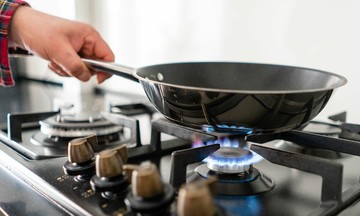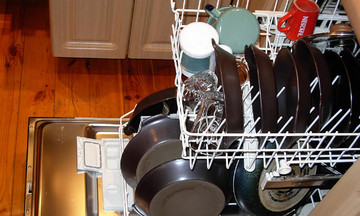Overpacking the refrigerator is a common mistake, according to Darin Detwiler, a food professor at Northeastern University.
According to research by Food Standards Scotland, 55.4% of household refrigerators have an average temperature above 5 degrees Celsius, outside the safe range of 0-5 degrees Celsius, allowing bacteria to grow rapidly. In addition, 7.5% of refrigerators do not have a thermometer, making it difficult for users to control the actual temperature.
When the refrigerator is overloaded, food spoils easily, especially vegetables, fruits, dairy products, and liquids. Items placed in the door or back corners are most affected because of fluctuating temperatures.
Detwiler recommends keeping the refrigerator about two-thirds full to allow air circulation. He suggests placing sensitive foods on the middle shelf, where the temperature is stable, and arranging older items on a first-in, first-out basis. Protein-rich and moist foods require special attention as a warm environment will promote the rapid growth of listeria monocytogenes, salmonella, and E. coli bacteria.
Refrigerators can also freeze foods that shouldn't be frozen, including lettuce, berries, herbs, dairy products, and liquids, causing them to spoil more quickly after thawing. Overpacking, whether it's frozen lettuce or leftovers kept at 7 degrees Celsius, can also ruin food and waste money.
Detwiler says there are warning signs that a refrigerator is overworked. Ice or snow buildup around food and vents is one of them.
A constantly running compressor emits a "wheezing" sound, and condensation or water droplets appear, along with a musty or unusual odor in some areas.
These signals indicate that cold air is not circulating properly, and food is in hot spots, increasing the risk of bacterial growth and spoilage.
Professor Keith R. Schneider, from the Department of Food Safety at the University of Florida, says a refrigerator thermometer is an important tool for monitoring food temperature. Most refrigerators only have one thermometer display in one location, so Schneider recommends placing additional thermometers in multiple locations to detect hot spots and ensure that food is evenly chilled.
Food storage location also affects quality. Milk, eggs, and ready-to-eat foods should be placed on the middle shelf, where the temperature is stable, rather than the door or back corners, which are prone to temperature fluctuations. Proper arrangement helps limit bacterial growth, preserve food longer, and reduce waste.
Ngoc Ngan (According to Huffpost)












